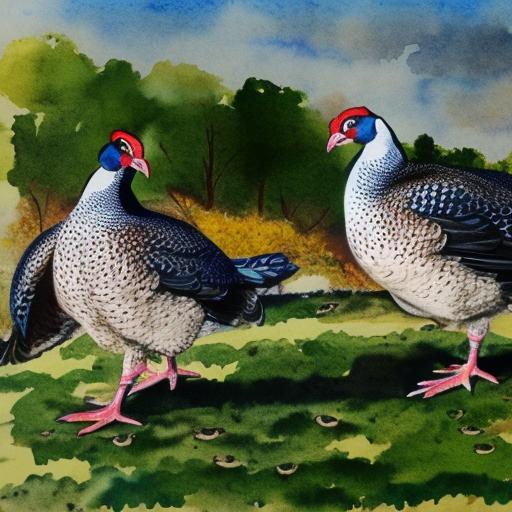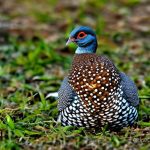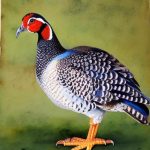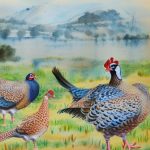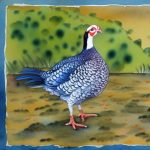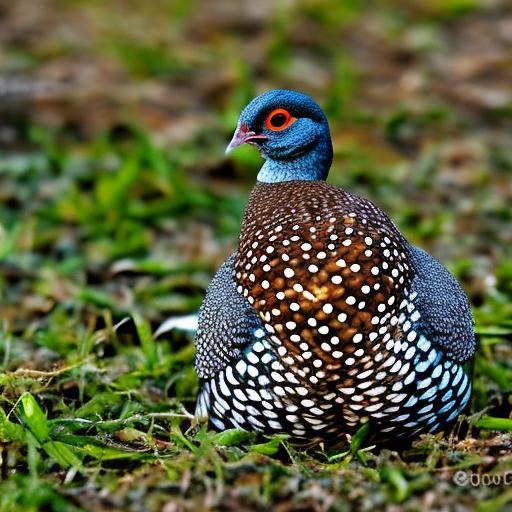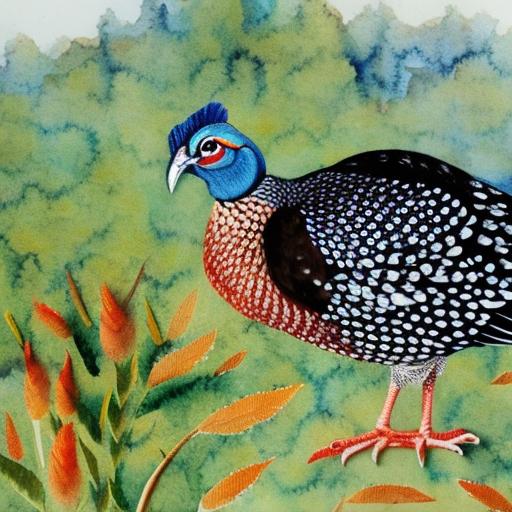Guinea fowl breeding season typically occurs in the spring and early summer months when the weather is warmer and food sources are more abundant. During this time, guinea fowl become more active in their mating behaviors and begin the process of nesting and egg laying. Breeding season is an important time for guinea fowl breeders, as it is the opportunity to expand their flock and ensure the continuation of their guinea fowl population. Understanding the various stages of the breeding season, from mating behavior to caring for guinea fowl chicks, is essential for successful breeding and raising of guinea fowl.
Key Takeaways
- Guinea fowl breeding season typically occurs in the spring and early summer, when the days are longer and the weather is warmer.
- Signs of mating behavior in guinea fowl include the male displaying his feathers and making a “buck-wheat” call, while the female may crouch down and allow the male to mount her.
- Guinea fowl prefer to nest in secluded areas, such as tall grass or bushes, and will lay their eggs in a shallow depression lined with feathers and leaves.
- The incubation period for guinea fowl eggs is around 26-28 days, and the hatching process can take up to 24 hours for all the chicks to emerge.
- When caring for guinea fowl chicks, it’s important to provide them with a warm, draft-free environment and a balanced diet of chick starter feed and fresh water.
- Challenges during breeding season may include predators, such as foxes and birds of prey, as well as the risk of egg breakage and infertility issues.
- Tips for successful guinea fowl breeding include providing a secure nesting area, monitoring mating behavior, and ensuring the availability of proper nutrition and protection for the chicks.
Signs of Mating Behavior in Guinea Fowl
During the breeding season, male guinea fowl will display mating behavior such as strutting, puffing up their feathers, and making loud calls to attract females. They may also engage in chasing and displaying their colorful plumage to impress potential mates. Female guinea fowl will respond to these displays by crouching down and allowing the male to mount them for mating. It is important for breeders to observe these behaviors to ensure that mating is occurring within the flock. Additionally, it is common for male guinea fowl to form small groups or “bachelor flocks” during breeding season, where they will compete for the attention of females. These behaviors are all signs that the breeding season is in full swing and that eggs may soon be on the way.
Nesting and Egg Laying
Once mating has occurred, female guinea fowl will begin to seek out a suitable nesting site to lay their eggs. They may choose a secluded area with tall grass or shrubbery to build their nest, or they may even use existing structures such as abandoned bird nests or brush piles. It is important for breeders to provide ample nesting materials such as straw or hay to encourage the females to build their nests in designated areas. Female guinea fowl will typically lay one egg per day until they have a clutch of 10-15 eggs, at which point they will begin to incubate them. It is important for breeders to regularly check the nesting areas for eggs and to collect them promptly to prevent them from being damaged or eaten by predators. Providing a safe and comfortable environment for nesting and egg laying is crucial for the success of the breeding season.
Incubation Period and Hatching
Once the female guinea fowl has completed laying her clutch of eggs, she will begin the incubation process, which typically lasts for 26-28 days. During this time, she will diligently sit on her eggs to keep them warm and protected from predators. It is important for breeders to provide a quiet and secure area for the incubating female, as any disturbances can cause her to abandon her nest. Additionally, it is essential to provide fresh water and food nearby to ensure that the incubating female has access to necessary resources without having to leave her nest for extended periods. As the incubation period progresses, breeders should monitor the nest closely for any signs of hatching, such as chirping sounds or movement from within the eggs. Once the eggs begin to hatch, it is important to provide a safe and warm environment for the newly hatched chicks to ensure their survival.
Caring for Guinea Fowl Chicks
When guinea fowl chicks hatch, they are precocial, meaning they are able to walk, feed, and regulate their body temperature shortly after hatching. However, they still require careful attention and care from breeders to ensure their well-being. It is important to provide a warm and draft-free brooding area for the chicks, as well as access to fresh water and a high-protein starter feed specifically formulated for game birds. Additionally, it is crucial to protect the chicks from predators such as snakes, birds of prey, and other animals that may pose a threat to their safety. As the chicks grow, they will require access to outdoor areas where they can forage for insects and other natural foods. Providing a balanced diet, protection from predators, and a safe environment for growth and development are essential aspects of caring for guinea fowl chicks during the breeding season.
Challenges and Considerations during Breeding Season
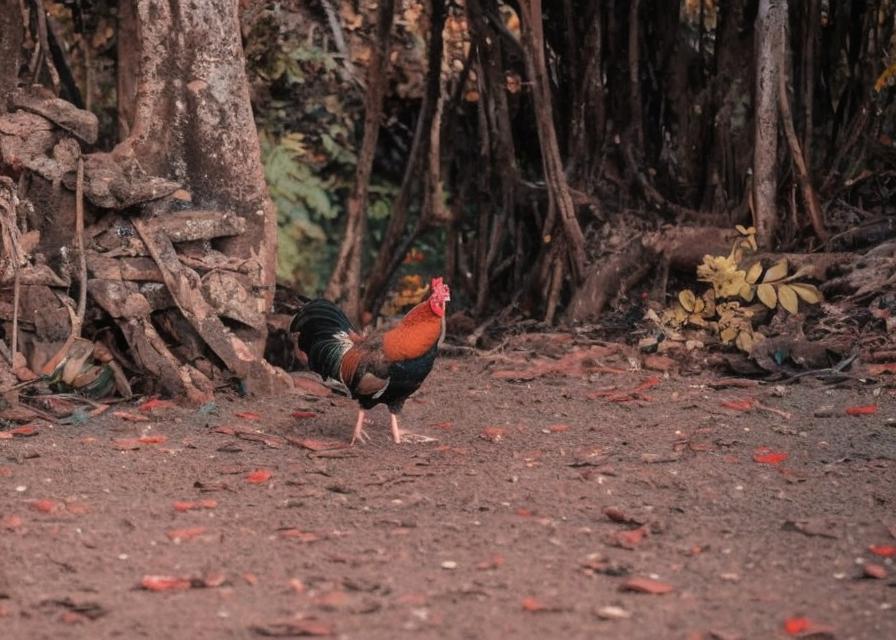
Breeding guinea fowl can present several challenges for breeders, especially during the breeding season. One common challenge is ensuring that there is a balanced ratio of males to females within the flock to prevent aggression and over-mating. Additionally, predators such as foxes, raccoons, and birds of prey pose a significant threat to nesting females and their eggs, requiring breeders to implement effective predator control measures. Another consideration during breeding season is providing adequate space and resources for nesting, egg laying, and incubation, as overcrowding can lead to stress and reduced reproductive success. It is also important for breeders to be prepared for potential health issues that may arise during breeding season, such as egg binding or reproductive disorders in females. By being aware of these challenges and taking proactive measures to address them, breeders can increase their chances of a successful breeding season.
Tips for Successful Guinea Fowl Breeding
To ensure a successful guinea fowl breeding season, there are several tips that breeders can follow. Providing a balanced diet rich in protein and essential nutrients is crucial for reproductive health and egg production in both males and females. Creating suitable nesting areas with ample nesting materials and protection from predators will encourage females to lay their eggs in designated locations. Monitoring mating behavior and egg laying closely will allow breeders to track the progress of the breeding season and address any issues that may arise. Implementing predator control measures such as fencing, netting, or guard animals can help protect nesting females and their eggs from predation. Additionally, providing a stress-free environment with ample space and resources will promote healthy reproductive behaviors and successful breeding outcomes. By following these tips and being attentive to the needs of their guinea fowl flock, breeders can increase their chances of a successful breeding season and the growth of their guinea fowl population.
In conclusion, guinea fowl breeding season is an important time for breeders to observe mating behaviors, nesting and egg laying, incubation and hatching, as well as caring for chicks. By understanding the various stages of the breeding season and implementing proactive measures to address challenges, breeders can increase their chances of a successful breeding season and the growth of their guinea fowl flock. With careful attention to the needs of their guinea fowl and a commitment to providing a safe and nurturing environment, breeders can ensure the continuation of their guinea fowl population for years to come.
If you’re considering breeding guinea fowl, it’s important to ensure they have a suitable environment for nesting and raising their young. This article on converting a shed to a chicken coop provides valuable insights into creating a safe and comfortable space for your guinea fowl during the breeding season. Proper housing and nesting areas are essential for the well-being of your guinea fowl and their offspring, so be sure to check out this resource for helpful tips on converting a shed into a suitable habitat for your birds.
FAQs
What is the breeding season for guinea fowl?
The breeding season for guinea fowl typically occurs in the spring and summer months, with peak breeding activity usually occurring from April to June.
At what age do guinea fowl start breeding?
Guinea fowl typically reach sexual maturity and start breeding at around 6-8 months of age.
How do guinea fowl choose a mate?
Guinea fowl typically form monogamous pairs, with the male displaying courtship behavior such as puffing up his feathers and vocalizing to attract a mate.
How many eggs do guinea fowl lay during the breeding season?
During the breeding season, a female guinea fowl can lay anywhere from 30 to 40 eggs, with each egg being laid approximately every other day.
How long does it take for guinea fowl eggs to hatch?
Guinea fowl eggs typically have an incubation period of around 26-28 days before they hatch.
What is the role of the male guinea fowl during the breeding season?
The male guinea fowl plays a protective role during the breeding season, guarding the female and the nest from potential threats.
Meet Walter, the feathered-friend fanatic of Florida! Nestled in the sunshine state, Walter struts through life with his feathered companions, clucking his way to happiness. With a coop that’s fancier than a five-star hotel, he’s the Don Juan of the chicken world. When he’s not teaching his hens to do the cha-cha, you’ll find him in a heated debate with his prized rooster, Sir Clucks-a-Lot. Walter’s poultry passion is no yolk; he’s the sunny-side-up guy you never knew you needed in your flock of friends!

